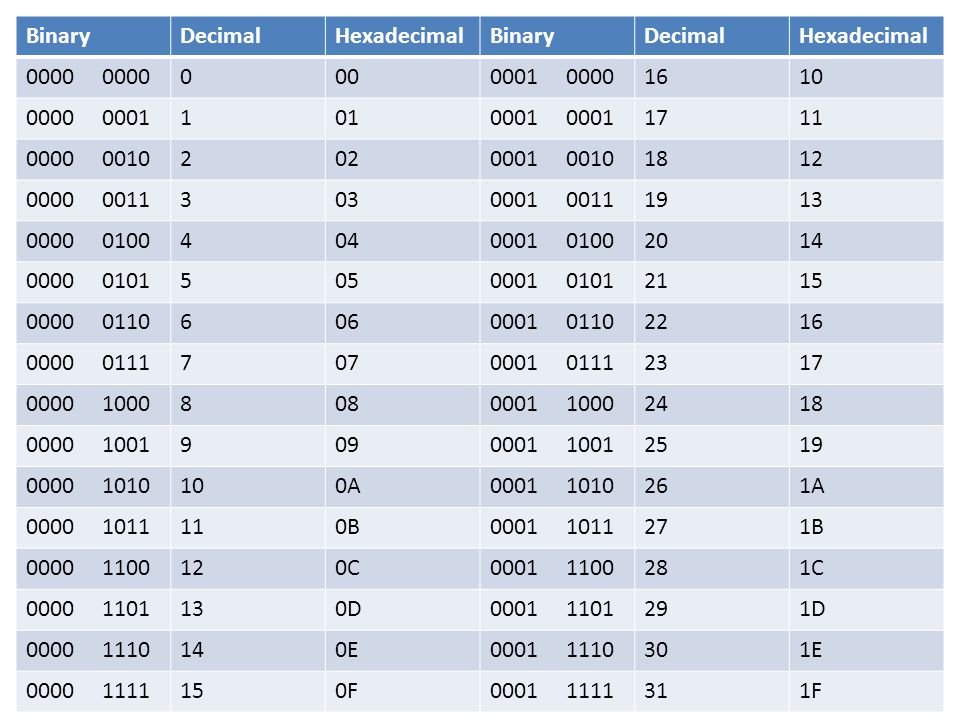- Part 1: Binary
- Part 2: Hexadecimal
- Part 3: Networking 101 (IP addresses, subnets, etc.)
- Part 4: Scenario based understanding of the 7 layers of the OSI Model
- Part 5: Azure Networking Foundations - VNet, Subnet, Security, and Connectivity
- Part 6: Azure Networking - VMs, IP Addresses, and Load Balancing
Binary is base 2, where base 2 means that and can only hold the values of 0 or 1 for a digit.
Hexadecimal is base 16. Base 16 means that up to 16 different values in any given placeholder. The values 0, 1, 2, 3, 4, 5, 6, 7, 8, 9, A, B, C, D, E, and F are the potential values for a digit in hexadecimal. Notice the pattern below between binary, decimal, and hexadecimal.
Reference: https://slideplayer.com/slide/5870246/19/images/24/Binary+Decimal.+Hexadecimal.jpg
The benefit of hexadecimal is that 4 binary bits can always be expressed in 1 hexadecimal value. Hexadecimal makes it easier to read and write large binary numbers.
Where is hexadecimal used?
- MAC addresses (on your router!)
- Error codes on Windows blue screens in the older days (STOP codes specifically)
- HTML color codes (#33CCFF)
If you want to see a cool article I like a lot that has more info, go here!





